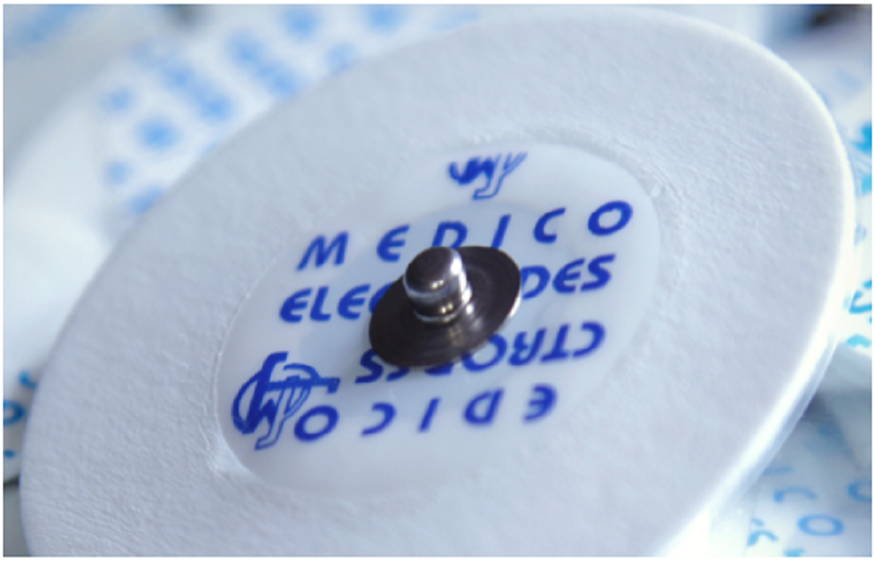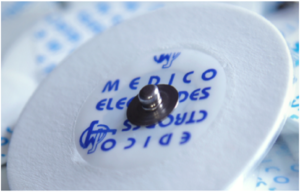
Electrodes for an electrocardiogram (ECG) are vital medical instruments that track and document the heart’s electrical cardiac activity. Their quality and functionality are vital since these electrodes are used in the diagnosis and monitoring of several cardiovascular diseases. We will look at the strict quality control procedures that a top producer of ECG electrodes has put in place to guarantee the creation of dependable, safe, and high-quality products in this article.
Thorough Raw Material Selection
Raw material selection is the first step towards high-quality ECG electrodes. While procuring materials from reliable suppliers, the producer follows strict standards and criteria. Before being shipped, every batch of raw materials is put through rigorous testing and inspection to make sure its composition, purity, and physical attributes all exceed specifications.
Chemical, mechanical, and visual inspection are among the analytical tests that are performed on incoming raw materials. For use in the production process, only materials that pass these stringent inspections are authorized.
regulated production environment
A very regulated and well-watched environment is used in the manufacture of ECG electrodes. To keep things clean and guarantee constant product quality, clean rooms, and controlled air environments are kept up to date.
The factory maintains stringent policies for process validation, equipment upkeep, and employee cleanliness in addition to Good Manufacturing Practices (GMP). The importance of their duties in preserving the integrity of the product is instilled in employees through thorough training on quality control processes.
Extensive Manufacturing Methods
Several crucial processes, each with strict quality control procedures in place, are involved in the production of medico electrodes.Every phase is meticulously tracked and recorded, from the making of conductive gels and adhesives to the assembling of parts and packing.
The manufacturing processes are tracked and examined in real-time using statistical process control (SPC) methodologies. As a result, any deviations or possible problems can be identified early on and corrected. This is accomplished by gathering and evaluating data from numerous checkpoints during the manufacturing cycle.
Checks for Quality During Process
ECG electrodes are subjected to multiple quality tests and inspections during the manufacturing process. The products are guaranteed to meet certain standards for adhesion, conductivity, size, and overall performance using these in-process inspections.
Electrical performance tests, adhesion evaluations, and gel conductivity studies are among the many testing procedures that samples from every production batch undergo. Prompt investigation is conducted on any deviations or non-conformities, and remedial measures are implemented to tackle the underlying cause.
final testing of the product
The finished product is put through a rigorous battery of testing on ECG electrodes before they are put into distribution. To make sure the medico electrodes ltd meet or surpass the performance requirements set by the manufacturer, these tests are made to mimic real-world scenarios.
Studies on rapid aging, biocompatibility assessments, and simulated use tests are examples of final product testing. To test an electrode’s durability and dependability, it is exposed to a range of environmental factors, including temperature, humidity, and mechanical stress.
Products are authorized for production and distribution only after passing these rigorous final tests.
Follow-Up Monitoring
Beyond just providing ECG electrodes, the producer maintains a high standard of quality. The effectiveness and safety of the items being used in the field are being tracked by a comprehensive post-market surveillance program.
Healthcare providers and end users provide data, which is collected and analyzed by systems for customer feedback, complaint processing, and adverse event reporting. Identifying any problems, starting investigations, and carrying out remedial and preventive measures as needed are all done with the help of this information.
The purpose of conducting routine audits and reviews of the quality system is to make sure that the quality management system is functioning effectively and to pinpoint areas that require ongoing upgrades.
Innovation and Continuous Improvement
Attaining quality is an ongoing process that involves constant innovation and improvement. ECG electrode performance, safety, and user-friendliness are all improved by research and development expenditures made by the producer.
The highest quality standards are upheld while new designs, materials, and production techniques are constantly assessed and implemented. To find chances for new and improved products, market trends and customer feedback are regularly observed.
Constant Education and Development of Competencies
The manufacturer places a high priority on ongoing competency development and training for its employees to uphold the highest standards of quality. All employees, from quality assurance staff to production operators, participate in frequent training sessions to advance their knowledge and abilities.
Numerous topics are covered in these training sessions, such as the most recent industry best practices, regulatory standards, and quality control processes. To guarantee that the concepts learned are applied practically, simulations and hands-on training are carried out, promoting a culture of excellence and continual improvement.
Quality Audits and Certifications
In an additional effort to showcase its dedication to excellence, the factory proactively seeks and upholds multiple quality certifications and accreditations from reputable organizations. The company’s quality management system and compliance with industry standards are independently validated by these certifications.
The efficacy of the quality system is evaluated and opportunities for improvement are noted through routine internal and external audits. These audits offer helpful insights and suggestions for improving processes and procedures in addition to ensuring compliance.
Social responsibility and environmental sustainability
The firm understands the value of social responsibility and environmental sustainability in addition to guaranteeing product quality. Eco-friendly techniques are used in all stages of manufacturing to cut down on waste, encourage energy conservation, and lessen the impact on the environment.
In addition, the business supports neighborhood communities and upholds moral labor standards by guaranteeing decent working conditions. By putting sustainability and social responsibility first, the manufacturer not only improves the world but also gains the respect and confidence of all parties involved, including customers and government agencies.
Conclusion
The precise diagnosis and monitoring of cardiovascular disorders depend heavily on the quality of ecg electrodes , which are extremely important. Throughout the product life cycle, from raw material selection to post-market surveillance, the manufacturer’s strict procedures and controls demonstrate their dedication to quality.







